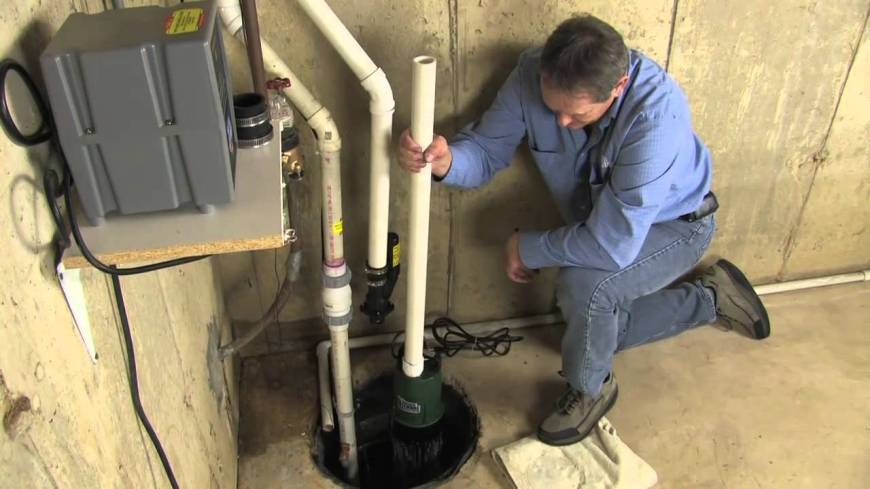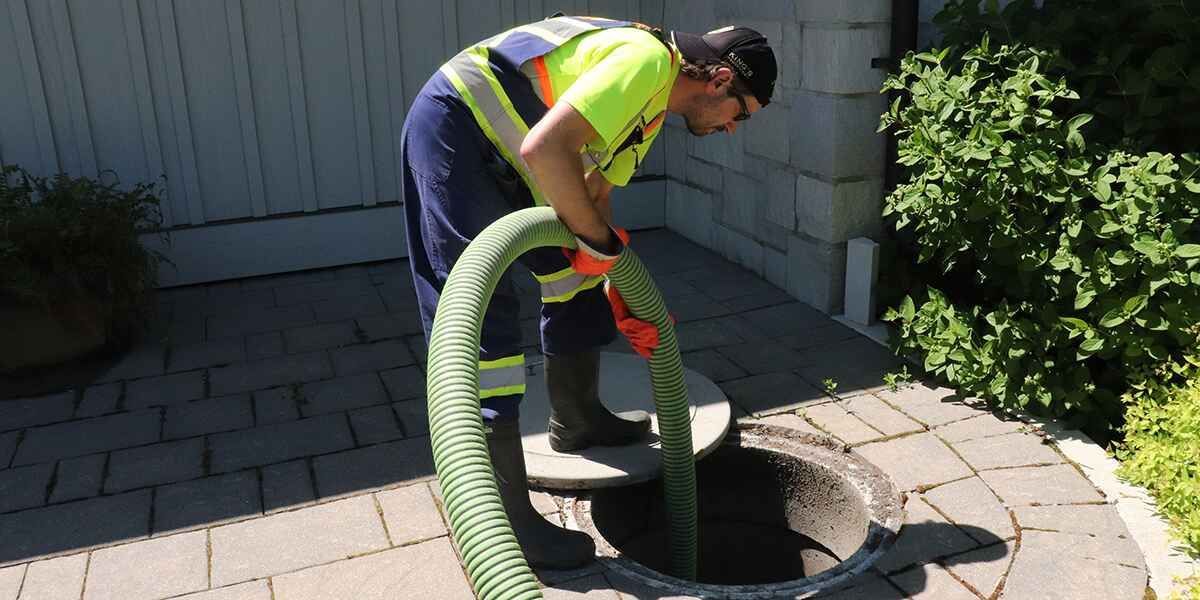The article author is making a few great observations on the subject of Steps to Cleaning Your Sump Pump Properly overall in the content followed below.

Sump pumps are vital elements in lots of homes, specifically in areas susceptible to flooding or extreme wetness. They help avoid water damage by successfully eliminating excess water from basements or crawl spaces. Nevertheless, like any other appliance, sump pumps require regular maintenance to guarantee they operate properly when required the most. Cleaning your sump pump is a vital part of its upkeep, and understanding how to do it correctly can save you from costly fixings and potential calamities.
Introduction
Preserving a clean sump pump is crucial for its proper performance and durability. Disregarding this necessary task can cause blockages, breakdowns, and eventually, water damages to your residential property. Consequently, discovering just how to clean a sump pump is vital for property owners that rely on these tools to maintain their basements completely dry and protected.
Signs of a Dirty Sump Pump
Knowing when your sump pump requires cleaning is crucial for preventing potential malfunctions. Some usual indications that indicate a filthy sump pump consist of strange sounds throughout operation, minimized water circulation, and visible debris in the pit. If you see any one of these symptoms, it's vital to cleanse your sump pump quickly to prevent any additional concerns.
Planning for Cleaning
Before you begin cleaning your sump pump, it's necessary to take some security precautions. Start by turning off the power to the pump to prevent any electrical mishaps. Additionally, use ideal protective equipment, such as handwear covers and safety glasses, to protect on your own from dust, particles, and possible virus.
Recognizing the Sump Pump
Prior to diving right into the cleansing procedure, it's vital to have a standard understanding of how a sump pump works. Normally mounted in a pit or container below the basement flooring, a sump pump consists of a number of key parts, including a pump, a float switch, and a discharge pipeline. When water gathers in the pit, the float switch activates the pump, which then pumps the water out with the discharge pipeline, away from the building's foundation.
Step-by-step Overview to Cleaning Up a Sump Pump
Shutting Off the Power
Begin by separating the power supply to the sump pump to prevent any type of crashes while cleansing.
Looking For Proper Functioning
Before reinstalling the pump, execute a quick test to ensure that the float switch activates the pump correctly. Pour some water right into the sump pit and observe the pump's procedure. If every little thing is operating appropriately, you can rebuild the pump and reconnect the power supply.
Getting Rid Of Debris and Dirt
Use a pail or an inside story to eliminate any noticeable particles, dirt, or debris from the sump pit. Dispose of the particles appropriately to prevent it from obstructing the pump or the discharge pipe.
Cleaning the Pump and Drift Switch
As soon as the pit is clear of particles, very carefully remove the pump from the pit. Check the pump and the float switch for any type of indicators of damage or wear. Make use of a soft brush or towel to cleanse the surface areas and remove any kind of gathered gunk.
Flushing the System
After cleaning up the pump and float button, purge the sump pit with clean water to get rid of any type of staying dust or sediment. This will help guarantee that the pump operates smoothly and efficiently.
Upkeep Tips to Keep Your Sump Pump Clean
Along with routine cleansing, there are numerous maintenance ideas you can follow to keep your sump pump in optimal problem:
- Normal Evaluation: Check your sump pump regularly for any kind of indications of wear, damages, or obstructions.
- Keeping the Surrounding Location Clean: Make Certain that the location around the sump pit is free of particles, dust, and blockages.
- Testing the Pump Occasionally: Evaluate your sump pump periodically by putting water into the pit and observing its procedure. This will certainly help you identify any potential problems prior to they intensify.
Verdict
Cleansing your sump pump is a vital aspect of its maintenance and makes certain that it runs efficiently when you need it the most. By adhering to the actions described in this overview and incorporating routine maintenance into your regimen, you can prolong the life expectancy of your sump pump and shield your home from water damages.
6 STEPS ON HOW TO CLEAN A SUMP PUMP PROPERLY
UNDERSTANDING SUMP PUMPS
Your sump pump plays a crucial role in protecting your home by managing and removing excess water. It primarily functions as a “shield”, guarding your basement against the damaging effects of water accumulation. The pump is housed in a sump pit in the lowest part of your basement, and its job is to pump out any water that collects there.
During heavy rainfalls or when snow melts rapidly, water can infiltrate your basement, posing potential risks like flooding, structural damage, and harmful mold growth. Here, the sump pump springs into action, pumping out the intruding water and directing it away from your home.
SAFETY FIRST
Before cleaning, remember to prioritize safety. Disconnect the sump pump from the power source to prevent any accidental electric shocks. Also, wear sturdy gloves to protect your hands from any sharp or dirty components within the pump.
REMOVE THE SUMP PUMP
After ensuring your safety, the next step is to remove the sump pump from its pit. Doing this might require careful maneuvering as you don’t want to damage any pump components. Once removed, clean the sump pit to remove any accumulated debris or sludge.
INSPECT THE PUMP
Inspect the pump for any visible signs of wear or damage. Check the power cord, float switch, and impeller housing. If any components look worn out or damaged, consider replacing them to ensure optimal performance.
CLEAN THE PUMP
Thoroughly clean the pump with warm, soapy water. Make sure to rid it of any dirt, gravel, or other debris that might impede its performance. You can use a toothbrush to clean the small, hard-to-reach parts of the pump.
REINSTALL THE SUMP PUMP
- Reinstall the pump into the sump pit
- Make sure it’s positioned correctly to remove the water effectively
- Once it’s back in place, reconnect it to the power source
TEST THE PUMP
Finally, pour some water into the pit to ensure the pump works correctly. It should start automatically and begin pumping out the water; if it doesn’t, check the power source and the positioning of the pump.
Remember, while cleaning your sump pump is an essential part of home maintenance, hiring a professional plumber for a thorough inspection and cleaning at least once a year is also important. This will ensure that your pump is in optimal condition, ready to protect your home from potential water damage.
BEST PRACTICES FOR CLEANING SUMP PUMP DISCHARGE PIPES
- Regular Inspection: Regularly inspect your discharge pipes, especially during heavy rainfall or snowmelt periods. Look for any signs of blockage or damage. Early detection of problems can prevent serious issues down the line.
- Periodic Cleaning: Over time, sediment and debris can accumulate in the discharge pipes, impeding the flow of water. Regular cleaning helps keep the pipes clear and functioning efficiently. You can use a high-pressure water jet to effectively clean the pipes.
- Insulation During Winter: In colder climates, discharge pipes can freeze, blocking the outflow of water. Protect your discharge pipes from freezing temperatures by insulating them with foam pipe insulation. This will ensure the sump pump can continue to discharge water even in freezing conditions.
- Proper Positioning: The discharge pipe should be positioned to direct water away from your home’s foundation. Improper positioning can lead to water seeping back into the basement. Ensure the pipe is long enough and angled correctly.
- Installation of a Check Valve: A check valve prevents water from flowing back into your sump pit after the pump has pushed it out. Installing a check valve helps maintain the efficiency of your sump pump and reduces the risk of flooding.
- Minimize Pipe Turns: Every curve or turn in the discharge pipe can decrease the efficiency of water flow. By minimizing turns and bends in your discharge pipe, you can increase the efficiency of your sump pump.
https://www.fullspeedplumbing.com/how-to-clean-a-sump-pump-properly9999/

I'm just very excited about Keep Your Sump Pump Clean, It'll Keep You Dry and I really hope you enjoyed our blog entry. Loved our posting? Please quickly share it. Help somebody else check it out. I treasure reading our article about How To Effectively Clean A Sump Pump.
Show Details
Comments on “Your Definitive Guide to Taking Care of a Sump Pump”